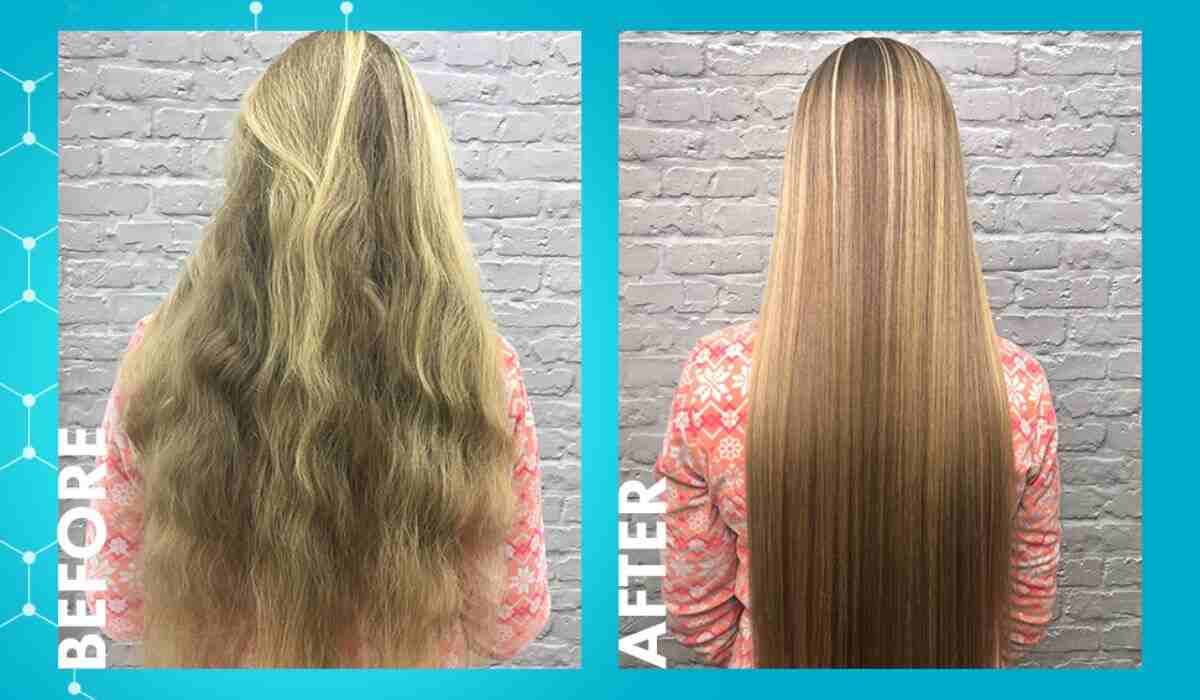Hair after keratin treatment involves applying hair dye to achieve a desired hue. It’s essential to wait a few days post-treatment to ensure optimal color absorption and maintain the benefits of the keratin treatment.
Unlock a world of vibrant possibilities! Wondering if you can add a splash of color to your hair post-keratin treatment? Let’s dive into the fascinating fusion of smooth locks and stunning hues. Discover the secrets to a dazzling transformation that keeps your hair healthy and stylish!
After a keratin treatment, it’s generally recommended to wait a bit before coloring your hair. The treatment forms a protective layer on the hair shaft, and immediate coloring may not yield desired results. Waiting at least a week allows the cuticle to fully close, ensuring better color absorption. Consult with your stylist for personalized advice based on your specific hair type and the products used during the keratin treatment.
Keratin Before Or After Color
Assess Your Hair’s Condition: Before coloring, evaluate the health of your hair. If it lacks keratin, consider prepping with keratin-rich products. Follow proper hair color instructions for best results.
Choose Keratin-Infused Products: Opt for shampoos, conditioners, or treatments that contain keratin to strengthen your hair and create a protective shield.
Pre-Treat Before Coloring: Apply keratin products a few weeks before coloring to enhance your hair’s resilience and minimize potential damage from the coloring process.
Follow Coloring Guidelines: When coloring after keratin treatment, ensure you use products suitable for color-treated hair to maintain both the color and the health of your strands.
Post-Color Care: After coloring, continue using keratin-infused products to nourish your hair and prolong the vibrancy of your color while keeping your strands strong and healthy.
Which Hair Color To Use After Keratin Treatment?
After getting a keratin treatment, it’s essential to choose a hair color that complements your newly-treated locks. Since keratin treatments can make your hair smoother and shinier, you might want to consider shades that enhance these qualities. Opt for colors that blend well with your natural hair tone or choose a slightly lighter or darker shade for a subtle change.
It’s advisable to wait a week or two after the keratin treatment before coloring your hair to ensure the treatment sets properly. Using sulfate-free and color-safe hair products will help maintain both your keratin treatment and your chosen hair color, keeping your tresses healthy and vibrant.
Cover Grey Hair After Keratin Treatment
After getting a keratin treatment to achieve smooth and frizz-free hair, you may be wondering how to cover those pesky grey hairs. The good news is that you can still color your hair after a keratin treatment, but it’s best to wait a couple of weeks to let the treatment set in.
Choose a hair color that complements your skin tone and covers grey effectively. Opt for ammonia-free or gentle formulas to maintain the integrity of your treated hair. Follow the instructions carefully and consider seeking advice from your stylist for the best results.
Cover Grey Hair After Keratin Treatment At Home
If you’ve recently undergone a keratin treatment and want to cover those pesky grey hairs at home, it’s easier than you think! First, choose a high-quality, ammonia-free hair dye close to your natural color. Before applying, make sure your hair is clean and dry.
Follow the instructions on the hair dye packaging, and be sure to wear gloves for protection. Apply the dye evenly, focusing on the grey areas, and leave it on for the recommended time. After rinsing, use a sulfate-free shampoo and conditioner to maintain the keratin treatment’s longevity. Voila! Enjoy your refreshed and vibrant hair without the hassle of grey strands.
Semi Permanent Hair Color After Keratin Treatment
After getting a keratin treatment for smooth and frizz-free hair, many wonder about adding a pop of color without compromising the treatment’s benefits. A semi-permanent hair color is a great option! Unlike permanent dyes, semi-permanent colors won’t interfere with the keratin treatment’s effects.
They add a temporary tint to your locks, allowing you to experiment with different shades without the commitment. Plus, as semi-permanent colors gradually fade over time, you can enjoy a vibrant look temporarily before returning to your beautifully treated, sleek hair. Just ensure to choose ammonia-free and sulfate-free options to maintain the health of your hair.
Frequently Asked Questions
How Long Should I Wait Before Coloring My Hair After Keratin Treatment?
Waiting for about a week is generally recommended. This allows the keratin to set in and ensures the color won’t interfere with the treatment process.
Can I use permanent hair color after a keratin treatment?
It’s possible, it’s better to choose semi-permanent or demi-permanent colors. These are less harsh and won’t disrupt the keratin’s effects on your hair.
Will coloring affect the longevity of my keratin treatment?
Using gentle, keratin-safe hair colors shouldn’t significantly impact the longevity of the treatment. Frequent use of strong chemicals may diminish its effectiveness over time, so it’s essential to follow recommended guidelines.
Conclusion
Coloring your hair after a keratin treatment is indeed possible, but it requires some care and consideration. Opting for a semi-permanent hair color is a safer choice as it won’t compromise the benefits of the keratin treatment. Make sure to choose ammonia-free and sulfate-free products to maintain the health and longevity of your beautifully treated locks.
It’s always advisable to consult with your stylist to ensure that the chosen color and products are compatible with the keratin treatment. With the right precautions, you can enjoy the best of both worlds – a vibrant hair color and the smooth, frizz-free results of a keratin treatment.













